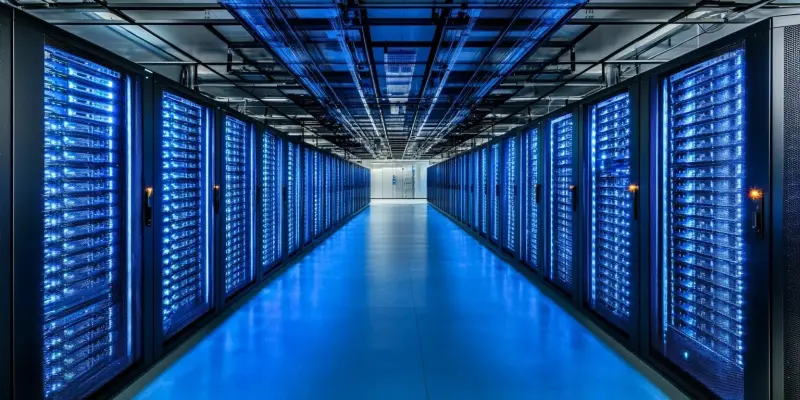A notable increase in global data center investments has been observed recently, driven by extraordinary growth in cloud services and AI infrastructure demands. The Dell’Oro Group reported a staggering $455 billion investment in 2024, reflecting a 51% year-over-year increase. The firm also projects another 30% rise in infrastructure capital expenditures this year. This trend is largely attributed to capacity expansions by cloud vendors to meet the burgeoning demand for AI-centric services. The top 10 hyperscale operators, including AWS, Microsoft, and Google Cloud, played a significant role, accounting for more than half of the total global data center expenditures.
The Influence of AI and Cloud Infrastructure
Generative AI Boom and Its Effects
The proliferation of generative AI has substantially impacted the technological ecosystem, prompting massive investments in cloud infrastructure. The dramatic rise in demand has led to constrained data center capacities in pivotal markets, subsequently driving up colocation facility rental rates. Moreover, enterprises beyond the major cloud providers have increased their hardware and infrastructure investments. According to Dell’Oro Group, these expenditures reached $150 billion, marking an unparalleled growth rate not seen since 2014. This suggests a broader trend where industries such as banking, insurance, and manufacturing are ramping up their investments in data center capacities to keep up with AI advancements.
Another significant development is the surge in AI processor investments, with Nvidia holding a dominant position. Nvidia’s market share in GPU server shipments reached over 90% by Q4 2024, underscoring its critical role in the AI infrastructure ecosystem. The demand for servers equipped with GPUs contributed to a substantial increase in revenues, surpassing those of traditional CPU servers. Data indicates that overall server sales hit an unprecedented $236 billion last year, driven predominantly by AI infrastructure projects in large data centers. This underscores Nvidia’s unassailable position in the processor market and its significant contributions to data center growth.
Broader Industry Contributions
Despite the substantial influence of major players like AWS, Microsoft, and Google Cloud, smaller cloud providers have also made noteworthy investments. Companies such as xAI and CoreWeave have been instrumental in expanding the reach of cloud services. This diversification in investments points to a more competitive and innovative landscape where multiple stakeholders contribute to the growth of data centers. This development benefits the overall ecosystem, spurring innovations and ensuring a more balanced distribution of resources and capabilities.
The Dell’Oro Group also highlights a remarkable rise in non-hyperscale AI hardware investments. Companies like Dell, HPE, and Supermicro have played pivotal roles in this segment, emphasizing the broadening scope of AI infrastructure investments. These companies have been crucial in catering to the needs of smaller organizations eager to harness the power of AI. Their contributions exemplify the dynamic and inclusive nature of the current technological landscape, where innovation is driven not just by the largest firms but also by a more diverse set of players.
Economic Factors and Market Projections
Economic Uncertainties and Supply Constraints
While the overall outlook remains optimistic, certain challenges could temper future investments in data center infrastructure. Economic uncertainties and hardware supply constraints pose potential risks that could impact IT spending. Many organizations are wary of global economic fluctuations, which could influence their investment strategies. Additionally, supply chain disruptions have been a recurring concern, potentially hindering the timely delivery of critical hardware. This underscores the importance of resilience and adaptability in the face of economic and logistical challenges, ensuring that the momentum gained is not diminished by unforeseen obstacles.
On the other hand, the increasing demand for AI infrastructure and cloud services is likely to mitigate some of these risks. The need for advanced data processing capabilities is anticipated to grow, driving continuous investments in data center capacities. This trend is reinforced by the rapid pace of technological advancements and the growing adoption of AI across various sectors. Enterprises must strategically navigate economic and supply chain challenges to leverage emerging opportunities and sustain growth in this competitive landscape.
Future Investments and Strategic Considerations
Looking ahead, the trajectory of data center investments is poised for sustained growth, driven by ongoing advancements in AI and cloud technologies. Enterprises must prioritize strategic planning and resource allocation to capitalize on these trends effectively. The key to success lies in adopting flexible investment strategies that can adapt to evolving market conditions and technological innovations. By staying agile and proactive, organizations can harness the full potential of AI infrastructure and cloud services, ensuring sustained growth and competitiveness in the coming years.
Additionally, collaboration and partnerships will play a crucial role in shaping the future of data center investments. Organizations must foster synergies with technology providers, cloud vendors, and other stakeholders to drive innovation and optimize resource utilization. By fostering an ecosystem of collaboration, companies can address challenges more effectively and unlock new opportunities for growth. In this dynamic environment, a holistic and forward-thinking approach will be essential for attaining long-term success and achieving strategic objectives.
Strategic Insights and Future Outlook
Recently, there has been a significant increase in global investments in data centers, propelled by the remarkable growth of cloud services and the rising demand for AI infrastructure. According to the Dell’Oro Group, investments in data centers are anticipated to reach an astounding $455 billion in 2024, signifying a 51% year-over-year surge. Furthermore, the firm forecasts an additional 30% rise in infrastructure capital expenditures this year. This upward trend is primarily driven by cloud vendors’ efforts to expand their capacities to accommodate the escalating demand for AI-focused services. The top 10 hyperscale operators, such as AWS, Microsoft, and Google Cloud, have been major contributors to this growth, with their expenditures accounting for over half of the total global data center investments. This surge highlights the importance of data centers in supporting modern technological advances and the increasing reliance on AI technologies and cloud computing services.

